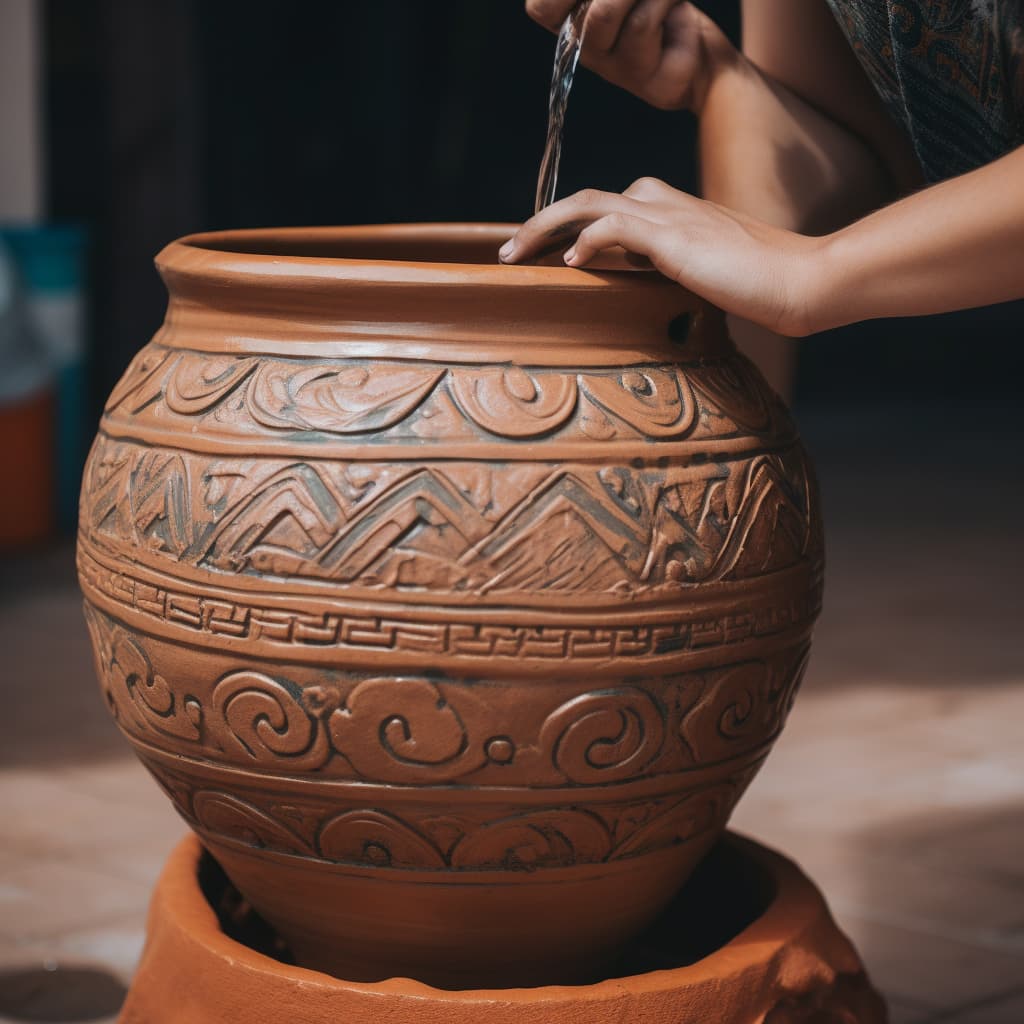AI generated content
This content is generated by an AI and does not reflect the opinions or views of individuals, either living or deceased.
| Text generated by | ChatGPT (GPT-4) |
| Text prompt | Find a little known fact about people from Spain, and write an article about it. |
| Image generated by | Midjourney |
| Image prompt | Bojito, the traditional Spanish water container made from clay |
Spain's Botijo: A Time-Honored Tradition of Natural Cooling

Introduction
Spain, known for its rich history, architectural wonders, and delicious tapas, is a country with a multitude of fascinating customs and traditions. One such lesser-known fact about the Spanish is their enduring use and appreciation of the "botijo," a traditional earthenware water container that keeps water cool through a natural process. This article will explore the history, functionality, and cultural significance of the botijo in Spain.
A Glimpse into the History of the Botijo
The botijo has a long history in Spain, dating back to the Roman period. It is believed to have originated from the Iberian Peninsula and later spread to other Mediterranean countries. Crafted from porous clay, the botijo is a staple in many Spanish households, particularly in rural areas and small villages where it is still commonly used today.
The distinctive design of the botijo features a wide, round body with one or more spouts for pouring water and a handle for easy carrying. The unglazed clay material allows for the natural cooling process to take place, making the botijo an effective and sustainable alternative to modern refrigeration methods.
The Science Behind the Botijo's Cooling Process
The botijo's ability to keep water cool relies on the principle of evaporative cooling. The porous clay material of the botijo allows water to slowly seep through its surface, where it then evaporates. As the water evaporates, it draws heat from the remaining water within the container, thereby lowering its temperature.
The effectiveness of the botijo's cooling process is dependent on several factors, including the humidity and temperature of the surrounding environment. In dry, hot climates – typical of many regions in Spain – the botijo can cool water to temperatures significantly lower than the ambient air temperature, providing a refreshing drink on hot days.
The Cultural Significance of the Botijo
The botijo is deeply ingrained in Spanish culture and is often featured in proverbs, songs, and works of art. Its practicality, simplicity, and sustainability have made it a symbol of traditional Spanish life, showcasing the resourcefulness and ingenuity of the people.
In recent years, the botijo has experienced a resurgence in popularity as people become more conscious of environmental issues and seek sustainable alternatives to modern technology. In addition to its practical use, the botijo has also become a collectible item, with many artisans crafting intricate and unique designs that showcase the diversity of Spanish pottery.
Moreover, the botijo has given rise to social customs, such as sharing and communal drinking, which fosters a sense of community and connection among the Spanish people.
Conclusion
The botijo, as a little-known fact about the Spanish, highlights a long-standing tradition that combines practicality, sustainability, and cultural heritage. This ingenious water container not only showcases the resourcefulness of the Spanish people but also serves as a testament to the timeless appeal of simple, effective, and environmentally friendly solutions. As the botijo continues to be a cherished part of Spanish culture, it stands as a symbol of the nation's appreciation for the wisdom and ingenuity of its ancestors.
